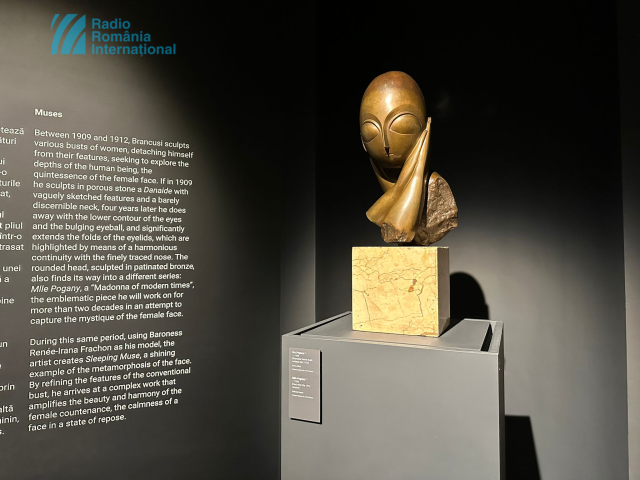End of the Brâncuşi exhibition from Timișoara
The exhibition devoted to the sculptor Constantin Brâncuşi at the Art Museum in Timişoara has come to an end.

Roxana Vasile, 29.01.2024, 14:00
A central point on the list of events that took place in Timișoara – European Capital of Culture, the exhibition Brâncuşi: Romanian sources and universal perspectives at the Art Museum, dedicated to the sculptor Constantin Brâncuşi, ended on Sunday evening. There were four months of visual delight and a record number of visitors, over 130,000 – double the estimates. People queued to see the works of the great artist, many of them emblematic: Măiastra, Bird in Space, The Kiss, Mademoiselle Pogany, Head of a Child, Prayer, Milestone or Sleeping muse, some borrowed from prestigious museums or art galleries such as the Pompidou Center in Paris or the Tate Gallery in London. Besides the sculptures, photographs, archive documents and filmed materials were also presented.
The curator of the exhibition, Ovidiu Şandor, believes that the event proved to be a phenomenon that gives people back the hope for a change in society through culture: I think that the exhibition touched a lot of people also through the way in which Doina Lemny chose the works, through the dialogue between sculpture, photography, drawing, and also through the scenography made by Attila Kim, innovative compared to how Brâncuşi has been presented until now, in other exhibitions.
According to the curator Doina Lemny, from the Pompidou Center, the exhibition was not so much a retrospective of Brâncuşi’s creation, as a demonstration of the sculptor’s permanent connection with his native country, even though he became famous in France. Constantin Brâncuşi was born on February 19, 1876, in the village of Hobita (south), later he studied in Bucharest, and in 1905 he went to Paris, where he came into contact with the artistic avant-garde there. His creative activity reached its peak between 1914 and 1940. The Georges Pompidou Museum of Modern Art in Paris holds an important number of Brâncusi’s works bequeathed to Romania by will, but gladly accepted by France, together with everything that was in his workshop in Rue du Montparnasse, after the refusal, in the 50s, of the communist government in Bucharest to receive them after the sculptor’s death. He died on March 16, 1957 and was buried in the French capital.
In the socialist realism Romania, Constantin Brâncuşi was contested as a representative of cosmopolitan bourgeois formalism. Hardly in the 60s was the sculptor rediscovered, at home, as a national genius. With an insured value of half a billion euros, but with an inestimable sentimental value, the works exhibited, now, for four months, in Timișoara, represented the most important exhibition of the last half century that is dedicated to him in Romania. A pillar of Romanian culture, Constantin Brâncuşi is also one of the world’s greatest sculptors of the 20th century. (LS)






























